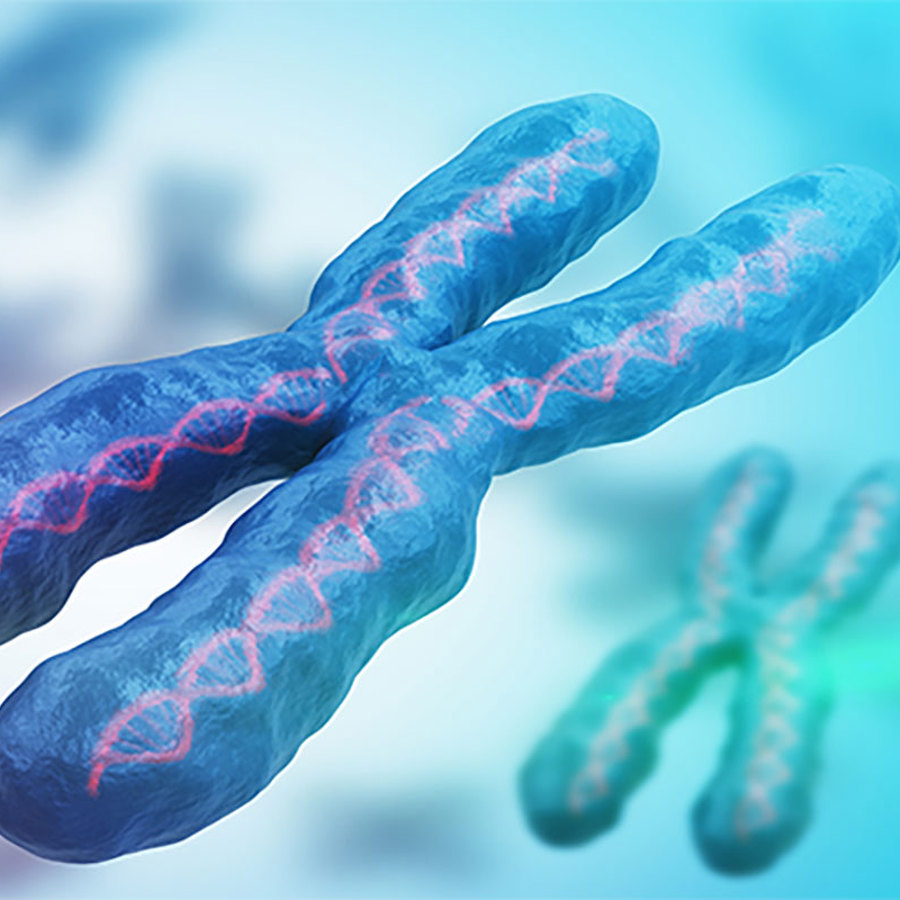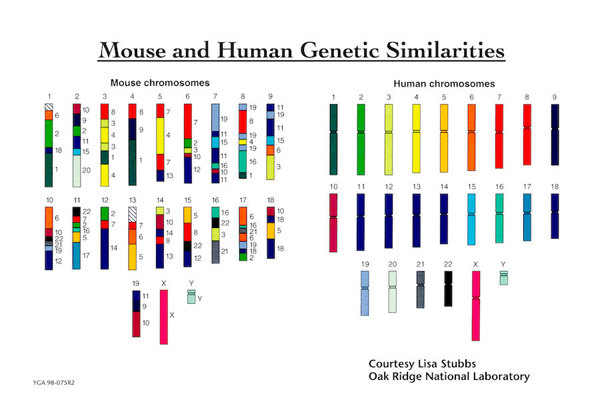
Is the location of a gene on a chromosome important?
June 16, 2004

- Related Topics:
- DNA basics,
- Noncoding DNA,
- Chromosomes
A curious adult from California asks:
“I have a bunch of questions about genes, their locations on chromosomes, and “junk” DNA. Do genes on one chromosome have some functional characteristic or are genes scattered across chromosomes without regard to their function? How important is the position of a gene within the DNA? Have any experiments been done to show whether “junk” DNA is important?”
First off, it doesn’t really matter on which chromosome a gene is located. The best evidence for this is found by comparing mouse and human chromosomes. What you can quickly see is that at a high level, mouse chromosomes are really just mixed up bits of human chromosomes. In other words, you can mix and match parts of chromosomes and everything works out OK.

However, it is important for some clusters of genes to be together and in the right position. These tend to be highly related genes that most likely arose from gene duplication events. In gene duplication, a piece of DNA ranging from a few nucleotides to a good chunk of chromosome is duplicated resulting in three copies of some of these genes.
Through chance, some of the duplicated DNA mutates resulting in new genes or the same genes expressed in a different place. These related genes are classified as gene families or superfamilies.
Sometimes within these clusters, the position of each gene relative to each other and surrounding DNA is important. One of the best studied examples of this is the beta globin gene locus. The beta globin genes are responsible for carrying oxygen to and carbon dioxide away from cells. On chromosome 11, there are five functional and two nonfunctional beta globin genes in a row.
If the beta globin genes are removed from their surroundings, they are not properly regulated. Also, if you mix up the order of the genes, they are expressed at the wrong times. For example, when the fetal hemoglobin gene is switched with one of the adult beta globins, it is now expressed in the adult instead of the fetus. What all of this means is that for the beta globin genes, it matters where on the chromosome they are located and where they are relative to each other.
“Junk” DNA is the large amount of DNA found between genes for which scientists haven’t yet assigned a function. Of course, just because we don't know what “junk” DNA does, that doesn't mean that it is necessarily junk. To test whether “junk” DNA does anything useful, a recent study was done that eliminated 1.6 million base pairs of “junk” DNA in mice.1 The deletion of this huge chunk of DNA had no obvious effect on the mouse in terms of how long it lived, what it looked like or anything else the scientists could measure. Maybe lots of DNA is junk or there are lots of copies of the important “junk” DNA spread throughout the genome.

Author: Dr. Barry Starr
Barry served as The Tech Geneticist from 2002-2018. He founded Ask-a-Geneticist, answered thousands of questions submitted by people from all around the world, and oversaw and edited all articles published during his tenure. AAG is part of the Stanford at The Tech program, which brings Stanford scientists to The Tech to answer questions for this site, as well as to run science activities with visitors at The Tech Interactive in downtown San Jose.
 Skip Navigation
Skip Navigation
